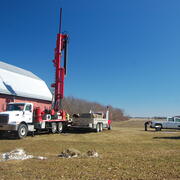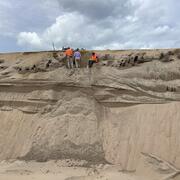Early detection, risk assessment, and integrated control technologies
Invasive Carp
Great Lakes Water Quality
HABs
Toxic Substances and Areas of Concern
Tree Swallows
Deep Water Fisheries Research
Large Vessels
This is just some of the great work being done in Region 3
Great Lakes
Midcontinent Region
The Midcontinent Region covers activities in the geographic area of Illinois, Indiana, Kansas, Kentucky, Michigan, Minnesota, Montana, Nebraska, North Dakota, Ohio, South Dakota, Wisconsin, and Wyoming. We conduct science to inform resource managers on issues such as aquatic invasive species, water quality and availability, wildlife disease, and restoration of fish/wildlife and their habitat
USGS Science Centers in the Midcontinent Region - DOI Region 3 Great Lakes
For more information on what each center is doing, please follow the links below!
USGS Science Centers in the Midcontinent Region - DOI Region 5 Missouri Basin
For more information on what each center is doing, please follow the links below!





